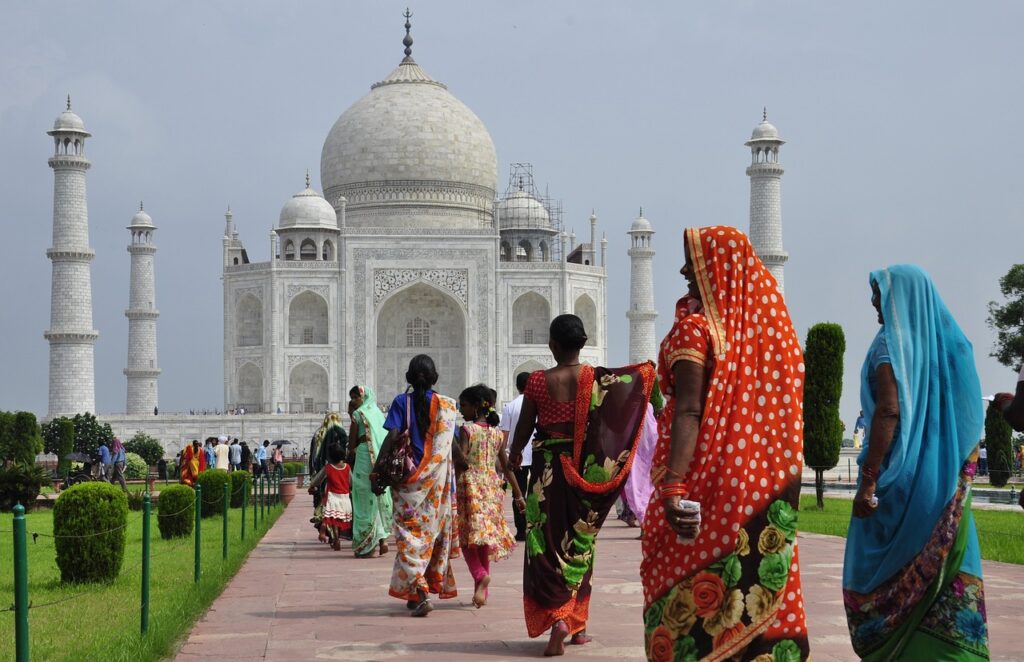The Taj Mahal, located in Agra, India, is an unparalleled architectural marvel that has captivated the world with its timeless beauty. This article delves into the artistic and historical significance of this iconic monument, exploring its origins, design, and cultural importance.
History:
The Taj Mahal was commissioned by Mughal Emperor Shah Jahan in 1632 as a mausoleum for his beloved wife, Mumtaz Mahal, who had passed away while giving birth to their 14th child. The construction of the Taj Mahal took approximately 20 years and employed thousands of artisans, craftsmen, and laborers. It was completed in 1653.
Architectural Style and Design:
The Taj Mahal blends various architectural styles, primarily Islamic, Persian, and Indian influences. It was designed by Ustad Ahmad Lahauri, a Persian architect, who combined these elements to create a harmonious and breathtaking structure. The Taj Mahal’s main building is made of white marble, adorned with intricate inlay work of semi-precious stones, and surrounded by lush gardens.

Features and Symbolism:
The main structure of the Taj Mahal is a large dome, flanked by four minarets at each corner. The mausoleum is set on a raised platform, and the central chamber contains the tombs of Mumtaz Mahal and Shah Jahan. The interior of the Taj Mahal is adorned with elaborate calligraphy, floral motifs, and geometric patterns. The complex also includes a reflecting pool, gardens, and various other structures.
Symbolically, the Taj Mahal represents an enduring symbol of love and devotion. It is said that Shah Jahan was deeply saddened by the death of his wife and wanted to create a monument that would immortalize their love. The Taj Mahal’s beauty and grandeur have made it a UNESCO World Heritage Site and one of the Seven Wonders of the World.
Tourism and Cultural Significance:
The Taj Mahal attracts millions of visitors from around the world who come to admire its architectural splendor and learn about its history. It is not only a symbol of love but also serves as a testament to the rich cultural heritage of India. The Taj Mahal has influenced art, literature, and various forms of media, becoming an enduring symbol of India’s cultural identity.

Preservation Efforts:
Due to environmental factors and pollution, the Taj Mahal has faced challenges in terms of its preservation. Efforts have been made by the Indian government, UNESCO, and other organizations to protect and conserve this iconic monument. Measures such as limiting nearby industrial activities, controlling vehicular pollution, and regular cleaning and restoration work have been undertaken to ensure the longevity of the Taj Mahal.
In conclusion, the Taj Mahal stands as a remarkable architectural marvel, embodying a fascinating history and captivating visitors with its exquisite beauty. It continues to inspire awe and admiration as a testament to the power of love and the magnificence of human creativity.



